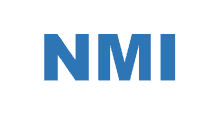Aim and scope
The aim of the Dutch Pesticide Risk Indicator (Nationale Milieu Indicator/NMI) is to evaluate impacts of agricultural use of pesticides and impacts of policies of the Dutch Government. The NMI 3 was developed for supporting the evaluation of the 1st national policy document on sustainable use of pesticides of the Dutch Government [3]. The next version NMI 4 was used for supporting the mid-term evaluation of the 2nd national policy document of the Dutch Government [4].
The scope of the model includes several environmental compartments and – protection goals. It does not include human protection goals. The scope includes applications to the most common crops in Dutch agriculture, with different types of applications in arable crops and greenhouse crop systems. The model can generate results for active ingredients of PPP’s, and, in a limited number of situations, for metabolites.
Basic calculations
The model converts usage and other input into emission indicators (loads). The load is converted into exposure concentrations and divided by the appropriate toxicity values. The resulting ETR-type risk indicator applies to the edge of the treated field (or the greenhouse).
Environmental compartments
The model distinguishes different emission pathways towards surface water: i.e. atmospheric deposition, spray drift, drainage flow, discharge from greenhouses [1, 2]. The model also calculates emission to air, to soil and to groundwater. For the terrestrial ecosystem, the usage is directly converted into exposure (indigestion for birds) and divided by the toxicity value.
Model input
The model uses a considerable amount of input which is stored in four different types of databases;
- The Usage db contains pesticide applications. An application is specified by the active ingredient, crop, volume applied, area treated, application time, application method, number of treatments, interval between treatments, spray drift technique (if applicable), and spray drift mitigation (if applicable).
- The Geo db contains crop maps, and soil, climate and surface water data for the spatial units of the soil-hydrological schematisation of the Netherlands.
- The Compound db contains physico-chemical and fate properties, and toxicity data from active ingredients and metabolites, including default values for substituting missing compound toxicity data.
- The NMI db contains crop data, conversion tables for different crop classifications, emission and exposure factors, and other parameters.
Processing results
For each application, detailed results per spatial unit are processed in order to obtain a single row with national average results. Next, these national average results for individual applications are aggregated (summated) per application type, compound, crop, sector, and combinations of these.
Using the model
Databases with input can be prepared by experts from WUR in collaboration with source data owners. The NMI 4 software instrument was developed by WENR in co-operation with Envista Consultancy BV. Expert users from WUR (WENR) can run the model and post-processed the results. The outcomes were delivered to expert users for further processing and interpretation and analysis, further processing (e.g. to the National Institute for Public Health and the Environment/RIVM). The software application can’t be delivered to external users.
Limitations
The NMI generates annual-based, national results. The outcomes were used to support national policy evaluations of the Dutch Government, i.e. to derive trends in annual risk (ex-post) and to compare different mitigation scenarios (ex-ante). A trend applies to a particular environmental compartment (protection goal) and exposure type. Results for different compartments and exposure types can’t be aggregated. For groups of applications of similar type, the results can also be used for ranking of compounds, for mapping, and for comparison with monitoring results at national and regional scale.
Detailed, intermediate results, i.e. at a specific location and time, are not available for external use. E.g. the value of the exposure concentration in a spatial unit at application time does not express the actual level of risk which may be considered in registration procedures. At the national scale, uncertainties are averaged out and results are more trustworthy. The effect of uncertainties in the input data on the results at regional scale levels was not investigated. For some types of applications, calculations are disabled in the current version (application type codes 3, 4, 5 and 10; see Tables 1, 2, 3 in [1]).

